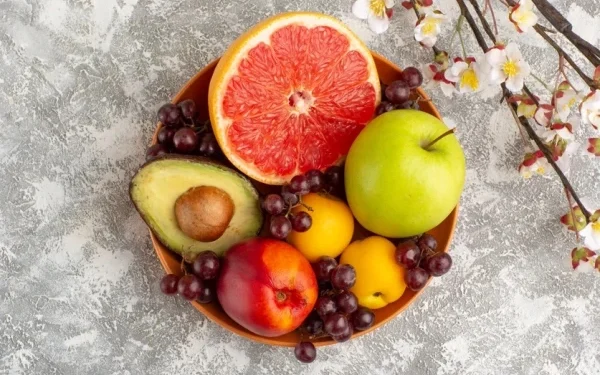Managing diabetes doesn’t mean you have to completely give up the natural sweetness of fruits. While some fruits are high in sugar and can cause blood glucose levels to spike, there are low-sugar fruits that are not only safe but beneficial for diabetics when consumed in moderation. These fruits have a low glycemic index (GI) and are packed with vitamins, antioxidants, fiber, and water, which can help stabilize blood sugar, improve digestion, and support overall health.
In this detailed guide, we’ll explore eight fruits that diabetics can safely enjoy, along with their glycemic index values, nutritional benefits, and tips on safe consumption.
Understanding the Glycemic Index and Why It Matters for Diabetics
The Glycemic Index (GI) is a system that ranks foods based on how they affect blood sugar levels. Foods are scored on a scale of 0 to 100, with:
- Low GI (1–55): Slowly digested and absorbed, causing a gradual rise in blood sugar.
- Medium GI (56–69): Moderate effect on blood sugar.
- High GI (70–100): Rapidly digested, leading to quick spikes in blood sugar.
For people living with diabetes, incorporating low-GI fruits into the diet can help maintain more consistent blood sugar levels, avoid energy crashes, and reduce the risk of complications like insulin resistance and cardiovascular disease.
1. Blackberries – A Sweet and Safe Superfruit
Glycemic Index (GI): 41
Why Blackberries Are Great for Diabetics
Blackberries are a nutritional powerhouse, offering a rich supply of fiber, antioxidants, and vitamin C in a low-sugar package. One cup of blackberries contains around 7 grams of sugar and 8 grams of fiber, which slows digestion and helps manage post-meal blood sugar spikes.
Additional Benefits
- High in anthocyanins, powerful antioxidants that protect cells from oxidative stress.
- May improve insulin sensitivity.
- Promote gut health due to their high fiber content.
Best Ways to Eat Blackberries
- Add to oatmeal or yogurt.
- Blend into a smoothie with unsweetened almond milk.
- Eat them fresh as a snack.
2. Kiwi – Tangy, Fiber-Rich, and Diabetic-Friendly
Glycemic Index (GI): 36
Kiwi’s Nutritional Profile
Despite its sweet and tangy flavor, kiwi is surprisingly low in sugar and rich in vitamin C, vitamin K, and dietary fiber. Eating kiwi with its fuzzy skin (after proper washing) increases its fiber content significantly.
Diabetes-Friendly Features
- High in soluble fiber, which slows glucose absorption.
- Contains actinidain, an enzyme that supports digestion.
- May help reduce blood pressure and cholesterol, improving cardiovascular health.
How to Enjoy Kiwi Safely
- Slice and eat whole (with skin if desired).
- Add to fruit salads or low-fat cottage cheese.
- Use as a topping for chia seed pudding.
3. Peaches – Sweet, Juicy, and Surprisingly Low-Glycemic
Glycemic Index (GI): 38
Peaches for Glucose Control
Peaches are naturally sweet yet have a low glycemic index, making them a smart fruit option for diabetics. They’re a good source of vitamin A, vitamin C, and fiber, which aid digestion and regulate sugar absorption.
Health Highlights
- Promote better digestion by improving bowel movement regularity.
- Their antioxidants may combat inflammation and support immune function.
- Natural sugars are released slowly due to fiber content.
Serving Ideas
- Eat fresh or grill lightly for enhanced flavor.
- Add slices to salads or sugar-free desserts.
- Blend with ice and mint for a refreshing smoothie.
4. Pineapple – Tropical Flavor with Careful Moderation
Glycemic Index (GI): 40
Pineapple’s Nutritional Boost
Pineapple is known for its high vitamin C content and digestive enzyme bromelain, which may aid in reducing inflammation and improving gut health. It’s moderate in sugar, so portion control is key for diabetics.
Why Diabetics Should Eat the Whole Fruit
- Whole pineapple contains fiber, which slows sugar absorption.
- Avoid pineapple juice, which lacks fiber and has a higher glycemic load.
- The enzyme bromelain may support immune health and reduce joint pain.
Smart Consumption Tips
- Limit serving size to ½ cup fresh chunks.
- Pair with protein (like Greek yogurt) to further slow digestion.
- Use in salsa or stir-fry with lean meat.
5. Watermelon – Hydrating and Rich in Nutrients
Glycemic Index (GI): 42
Is Watermelon Safe for Diabetics?
Watermelon has a higher glycemic index than some other fruits but a low glycemic load due to its high water content. It’s a good source of vitamin A, vitamin C, and lycopene, an antioxidant linked to heart health.
Why Watermelon Still Works
- Provides hydration, especially beneficial in hot climates.
- Lycopene may help reduce the risk of nerve damage and eye issues.
- Fiber and antioxidants help regulate metabolism.
Serving Suggestions
- Limit portion to 1 cup diced.
- Avoid pairing with other high-carb foods.
- Eat chilled for a refreshing summer snack.
6. Cherries – Brain-Boosting and Blood Sugar Friendly
Glycemic Index (GI): 53
Cherry’s Secret Weapon: Anthocyanins
Cherries, especially tart cherries, are rich in anthocyanins, compounds known to reduce inflammation, enhance brain function, and help stabilize blood glucose.
What Makes Them Diabetic-Friendly
- Moderate GI with high antioxidant capacity.
- Shown to improve sleep quality by increasing melatonin levels.
- May help lower HbA1c (long-term blood sugar marker) when consumed regularly in small portions.
How to Include Cherries Safely
- Eat a small handful (10–12 cherries).
- Use in unsweetened yogurt or oatmeal.
- Avoid canned cherries in syrup.
7. Grapefruit – Low GI and Anti-Inflammatory Power
Glycemic Index (GI): 20
One of the Best Fruits for Diabetics
Grapefruit has one of the lowest GI scores among all fruits. It contains naringenin, a compound that helps improve insulin sensitivity and reduce inflammation.
Additional Perks
- Rich in vitamin C, which boosts immunity.
- May help lower bad cholesterol (LDL) levels.
- Supports weight loss due to low calorie content.
Important Note
Grapefruit can interact with certain medications, particularly statins and blood pressure drugs. Always consult your doctor before including it in your diet.
Safe Ways to Eat Grapefruit
- Eat half a grapefruit for breakfast.
- Add segments to a spinach salad.
- Avoid adding sugar or honey.
8. Papaya – Nutrient-Dense but High GI: Eat in Moderation
Glycemic Index (GI): 72
Why It’s on the List Despite a High GI
Papaya is high in vitamin A, vitamin E, folate, and enzymes like papain, which aid digestion. Although its glycemic index is relatively high, its natural sugars and water content make it safe for diabetics when consumed in strict moderation.
Benefits for Diabetics
- Aids digestion and relieves constipation.
- Contains antioxidants that protect the pancreas.
- Helps in reducing inflammation in the body.
Recommended Serving
- Stick to ½ cup or 1–2 small cubes per serving.
- Combine with high-fiber foods to reduce glycemic impact.
- Avoid dried or candied versions.
Final Thoughts: Choosing the Right Fruits as a Diabetic
Living with diabetes doesn’t mean eliminating fruit from your diet. Instead, the key is choosing low-sugar fruits with a low glycemic index, controlling portion sizes, and balancing meals with proteins and healthy fats.
Quick Summary Table
| Fruit | Glycemic Index | Safe Portion | Key Benefits |
|---|---|---|---|
| Blackberries | 41 | 1 cup | Fiber, antioxidants, immune support |
| Kiwi | 36 | 1 medium | Vitamin C, fiber, digestive health |
| Peaches | 38 | 1 small or ½ large | Fiber, vitamins A & C |
| Pineapple | 40 | ½ cup chunks | Vitamin C, anti-inflammatory enzymes |
| Watermelon | 42 | 1 cup diced | Hydration, antioxidants |
| Cherries | 53 | 10–12 cherries | Brain health, antioxidants |
| Grapefruit | 20 | ½ fruit | Low GI, heart health, insulin sensitivity |
| Papaya | 72 | 2–3 small cubes | Vitamins, digestion, antioxidant support |

























